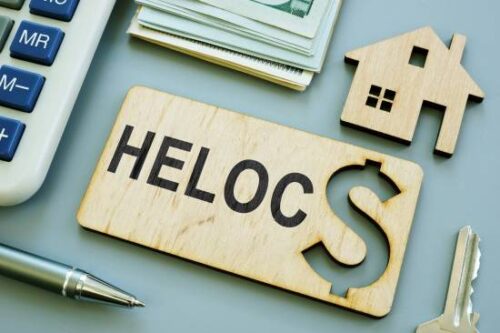
Those who intend to borrow money have many options, but two of the most popular are HELOCs (home equity lines of credit) and LOCs, which have no home equity component. While the two approaches to borrowing have plenty of similarities, there are some key differences that prospective borrowers should know before they sign on the dotted line. The primary component that differentiates the two is the security aspect.
Homeowners who owe less on their mortgages than the current market value of the property are said to have built-up equity. In a HELOC, the owner borrows against that amount directly. In a LOC, there is no property that serves as security, so the entire contract is based on the creditworthiness of the applicant, not physical collateral. There are several other components of the comparison detailed below.
What’s at Risk?
The primary thing that makes a line of credit unique, in comparison to HELOCs, is that it is an unsecured loan. What’s at risk for someone who borrows money without collateral? Their credit scores, and you should know the difference between credit score and FICO score, could take a major hit if they don’t repay the money in a timely fashion, but their homes, cars, and other assets are not at risk of being seized or repossessed.
For HELOC borrowers, not repaying means facing the prospect of losing their houses. It’s important to understand that one or two missed payments won’t immediately cause repossession. The details about what happens in default or delinquent payment are spelled out in the contract. If you decide to put your house up as collateral to establish a line of credit, be sure to familiarize yourself with every detail of the agreement first.
Investing in Real Estate is Easier with a HELOC
For those who want to take advantage of a lucrative real estate opportunity, HELOCs generally are the better way to go because their borrowing limits tend to be significantly higher than for other types of loans, including personal, unsecured LOCs. Lenders are more willing to set higher dollar limits for those who provide physical collateral. If you’re utilizing a HELOC to take advantage of a real estate bargain you found on the market, the arrangement can be a wise way to act fast and lock in a good deal on an available property.
The beauty of the loan’s provisions is that homeowners can tap their existing equity, which can be substantial, without having to sell. Additionally, they usually gain access to low-interest rates on borrowed funds. Keep in mind that there are both positive and negative features of this kind of borrowing, so remember to review a HELOC-related guide to determine if the strategy is suited to your financial needs.
Interest Rates
It only makes sense that if you put your property up as security when borrowing money, the interest rate will be lower than if you apply with no security at all. That’s one of the main advantages of using built-up equity to gain access to funds you can use for an emergency, to pay medical bills, or anything else. Always check the current prime rate to get a feel for the cost of borrowing.
Appraisals
There tends to be more paperwork involved with HELOCs because many lenders want a recent appraisal of the property. The only way to accurately calculate a total equity is to use a current appraised value. From that number, they subtract whatever you owe on the mortgage to find the exact amount of equity. Then, based on that number, people can usually borrow up to about 85% of the total dollar amount of their ownership in the property. If you plan to put your home up as collateral, expect to pay a few hundred dollars for an appraisal. Depending on the amount you want to borrow, the expense is insignificant in most cases.
Ease of Approval
In general, financial institutions are more apt to lend money to people who have collateral. While the process might take longer due to appraisals and other legal requirements, the outcome for homeowners is usually better than for those who apply for loans based on their credit ratings alone. In fact, homeowners can usually predict their chances for approval, expected interest rates, and borrowing limits based on general guidelines available on the internet.





